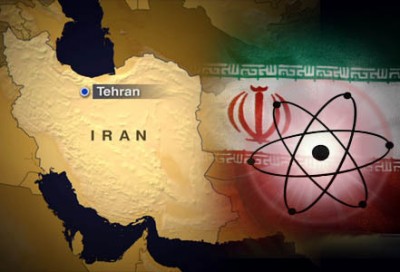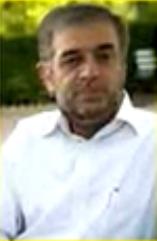 He is believed to top the list of elusive Iranian officials the U.N. nuclear watchdog wants to query. Exiled foes of the Islamic state cite him as the mastermind of clandestine efforts to design an atomic bomb. Tehran is mum about him, while denying having any nuclear arms agenda.
He is believed to top the list of elusive Iranian officials the U.N. nuclear watchdog wants to query. Exiled foes of the Islamic state cite him as the mastermind of clandestine efforts to design an atomic bomb. Tehran is mum about him, while denying having any nuclear arms agenda.
Probably living under tight security, Mohsen Fakhrizadeh did not join this week’s talks in Vienna between Iran and six world powers directed at striking a deal by late July to end a decade-old dispute over Tehran’s nuclear aspirations.
But Western officials and experts think the shadowy military figure played a pivotal role in suspected Iranian work in the past to develop the means to assemble a nuclear warhead behind the facade of a declared civilian uranium enrichment program.
They say shedding light on his alleged activities is critical for understanding how far Iran advanced and ensuring they are not continuing now, which the West wants any settlement with the Islamic Republic to guarantee.
But that will be easier said than done: an aura of deep mystique surrounds a man who rarely – if ever – seems to surface in public. Few outside Iran know with any certainty what he looks like, let alone have met him.
“If Iran ever chose to weaponize (enrichment), Fakhrizadeh would be known as the father of the Iranian bomb,” said a Western diplomat who is critical of Iran’s nuclear program but is not from any of the powers now negotiating with Tehran.
Iran says it is refining uranium only for a planned network of nuclear power plants, not as fuel for nuclear bombs, and dismisses such allegations as fabrications by Western enemies.

Showing no sign it will heed the request, Iran several years ago acknowledged Fakhrizadeh’s existence but said he was an army officer not involved in the nuclear program, a diplomatic source with knowledge of the matter said.
There was no immediate comment from Iran or the IAEA.
MULTIPLE PASSPORTS, SUPPORT OF KHAMENEI
A high-ranking Iranian source, however, described Fakhrizadeh as “an asset and an expert” dedicated to Iran’s technological progress and enjoying the full support of its most powerful man, clerical Supreme Leader Ayatollah Ali Khamenei.
The source added that Fakhrizadeh had three passports and traveled a lot, including in Asia, to obtain “the latest information” from abroad, but would not elaborate. Western security sources say Iran has been adept in obtaining nuclear materials and know-how from the international black market.
The assassinations of four Iranian scientists associated with the nuclear program between 2010 and 2012 may have stiffened Tehran’s unwillingness to give the IAEA access to Fakhrizadeh – for fear this could lead to information about him and his whereabouts leaking. Iran accused its arch-adversaries the United States and Israel of being behind the killings.
A landmark IAEA report in 2011 identified Fakhrizadeh as a central figure in suspected Iranian work to develop technology and skills needed for atomic bombs, and suggested he may still have a role in such activity.
Believed to be a senior officer in the elite Revolutionary Guards, Fakhrizadeh was the only Iranian the report identified.
“MOST-WANTED LIST”
“If the IAEA had a most-wanted list, Fakhrizadeh would head it,” Mark Fitzpatrick, director of the non-proliferation program at the International Institute for Strategic Studies (IISS) think-tank in London, said.
He was also named in a 2007 U.N. resolution on Iran as a person involved in nuclear or ballistic missile activities.
“Dr Fakhrizadeh is considered to be the leader of Iran’s nuclear weaponization program that existed before 2003,” said Gary Samore, until last year the top nuclear proliferation expert on U.S. President Barack Obama’s national security staff.
“The IAEA would like to interview him about his past and current activities,” he said.
A senior Western official said the possibility that Iran may be continuing secret work related to atomic bomb research while negotiating with the powers was hardly a surprise.
Pressing ahead with the talks was all the more important, the official said, because Tehran must end any bomb-related activity to get the sanctions relief it seeks. “They want something and we need something in return.”
One intelligence source from an IAEA member state said Fakhrizadeh seemed to be a “very qualified manager” inspiring loyalty among those working for him.
The Iranian official commented: “He is a very modest person who supports the team working for him.”
An exiled Iranian opposition group, the National Council of Resistance of Iran (NCRI), in May issued a report with what it said was a photograph of Fakhrizadeh, with dark hair and the customary beard stubble sported by backers of Iran’s Islamic leadership. It was not possible to independently verify it. A NCRI spokesman said it was “not very recent” but gave no detail.
The NCRI said Fakhrizadeh was born in 1958 in the holy Shi’ite Muslim city of Qom, is a deputy defense minister and a Revolutionary Guards brigadier-general, holds a nuclear engineering doctorate and teaches at Iran’s University of Imam Hussein. It said he was the head of a secretive body which it called “the command center” behind atomic bomb-related activity.
“The information is consistent with the mainstream view that Fakhrizadeh ran and may still be running some kind of program, where the parts look related to nuclear weaponisation development,” nuclear expert David Albright said.
TRANSPARENCY KEY ISSUE IN TALKS
The NCRI exposed Iran’s uranium enrichment plant at Natanz and a heavy-water facility at Arak in 2002. But analysts say it has a mixed track record and an agenda of regime change in Iran.
Tariq Rauf, a former senior IAEA official who is critical of the U.N. agency’s inquiry, said the NCRI might be trying to stymie the negotiations between Iran and the powers.
“I would doubt that nuclear weapon-related work is still going on,” Rauf, now at the Stockholm International Peace Research Institute (SIPRI), said in an email to Reuters.
The IAEA has for years been investigating what it calls the possible military dimensions to Iran’s nuclear program. Iran says the allegations are false but has offered to help clarify them since pragmatist Hassan Rouhani became president last year.
However, Western officials say Iran should step up the pace of cooperation with the Vienna-based U.N. agency and that this is crucial for the chances of a successful outcome of the separate negotiations between Iran and the global powers on curbing the nuclear program and lifting sanctions on Tehran, a deal that would head off the risk of a new Middle East war.
“Interviewing Fakhrizadeh is critical. If not, there will always remain strong suspicions that Iran is hiding a capability to build nuclear weapons,” Albright said.
NUCLEAR YIELDS, NUCLEAR TRIGGERS
Citing information from member states and other sources, the IAEA’s 2011 document painted a picture of a concerted weapons program that was halted in 2003 – when Iran came under increased Western pressure – but some activities later resumed.
They included alleged computer studies regarding nuclear yield calculations and a nuclear trigger – activities that may have been carried out after 2003, some as late as 2009.
Around 2002-03, the IAEA said, Fakhrizadeh was the executive officer of the so-called AMAD Plan, which according to its information conducted studies related to uranium, high explosives and the revamping of a missile cone to accommodate a nuclear warhead.
More recently, he became head of a body called the Organisation of Defensive Innovation and Research, according to intelligence from one unidentified country cited by the report.
“The Agency is concerned because some of the activities undertaken after 2003 would be highly relevant to a nuclear weapon program,” added the IAEA document.
A source familiar with intelligence information on the issue said Fakhrizadeh appeared to have objected to the decision by the leadership to shelve bomb research over a decade ago, indicating that he was personally committed to the project.
“There is no chance that Iran will make him available. They will argue that it would expose him to danger, and he may well be on a real hit list,” Fitzpatrick said.
Reuters


Leave a Reply
You must be logged in to post a comment.